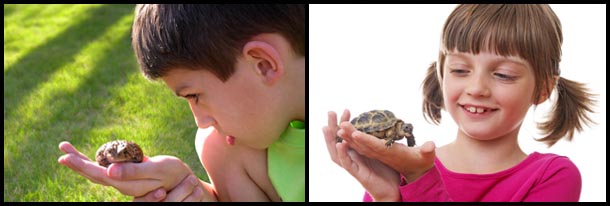Geckos shed around every month in adulthood, and will often eat their shed skin. This is to gain back some of the nutrients they lose by shedding, and also to avoid being detected by predators in the wild.
Why do geckos shed?
Geckos continuously grow throughout their lives. They have a tough outer layer of skin for protection, which is unable to stretch and grow along with them. This means it has to be peeled from their body to expose a new layer of skin, which will act as the tough protective layer until they shed again.
How often a gecko will shed depends on how fast they are growing- as they get older, they’ll start to shed less often. When they are young, they’ll usually shed about every week, which will change to every month as they grow older.
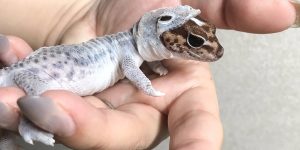
You can tell your gecko is about to shed when their skin becomes dull and translucent. Their pattern may become less distinct. This is because they produce a layer of fluid between the outer layer of skin, and the layer beneath it. This fluid acts as a lubricant, helping the old layer to glide off more easily.
The older skin then loosens, and begins to peel off. They may move their limbs strangely of begin to bite at their skin to free it.
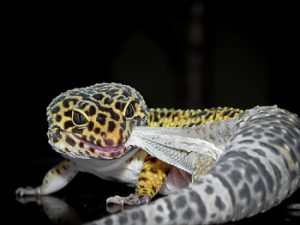
Why do geckos eat their shed skin?
It may seem quite shocking and gross when you first see your gecko eat their own shed skin, but this is a completely normal, natural habit. They will do this almost every time they shed.
They eat their shed skin for a number of reasons. The main reason is that when geckos shed, they are losing lots of nutrients and minerals, through the lost skin and the fluid they had to produce to shed it. They eat the skin to gain some of these nutrients back. This will help them to generate a new, tough protective layer in the future.
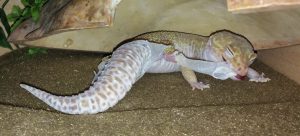
Another reason is that eating their shed skin is actually a survival instinct in the wild. Leaving the shed skin may attract predators. Since it would usually be kept near the gecko’s den, it can lead the predators to the geckos themselves. Geckos eat their shed skin to avoid detection, even though they have no predators to worry about in your home.
Helping your gecko to shed
Most of the time, geckos are able to fully shed without any shedding difficulties. They don’t have as many complications with shedding as other reptiles. However, there are some areas where skin can stick, and is hard for them to remove.
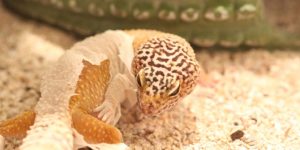
If the skin is stuck to non-sensitive areas, such as the back or top of the head, you can help by gently rubbing the area with a damp cloth or paper towel. This will free the edges of the skin, which can then be (very gently!) pulled away. If the skin doesn’t easily come off, you should leave it for at least another day.
While this is a fairly easy process, removing skin from sensitive areas can injure your gecko quite easily. These areas include the eyes, toes, vent, and tip of the tail. If the skin is stuck in these areas, you can try using a damp towel like described above. However, you should stop if the skin doesn’t come off immediately.

A safer method is to simply soak your gecko in a very shallow bowl of warm water for around 20 minutes. The water will be absorbed into the dead skin, making it more malleable and so easier to remove.
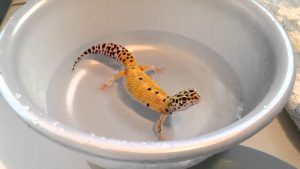
Animal-Club provides animal parties or animal handling workshop where your will be able to see, learn and interact with our wonderful animals with the help of our presenters. Our mobile zoo has many friendly animals such as rabbits, tarantulas, geckos, vinegaroons and more that will be perfect for an animal party. We can also come over to your school for an animal school visit or arrange for an animal workshop with us where the children can learn about animals and have fun too.


